Located in the Shekhawati region of Rajasthan, Tal Chhapar Wildlife Sanctuary is a pristine haven for wildlife enthusiasts and nature lovers. Spanning over 700 square kilometres, this sanctuary is renowned for its unique ecosystem and diverse wildlife, particularly the blackbuck antelope. The sanctuary’s landscape is a blend of arid grasslands, rocky outcrops, and occasional water bodies, offering a distinct charm. Whether you are an avid photographer, a bird watcher, or simply seeking tranquillity in nature, Tal Chhapar provides an unparalleled experience.
Tal Chhapar Wildlife Sanctuary Location
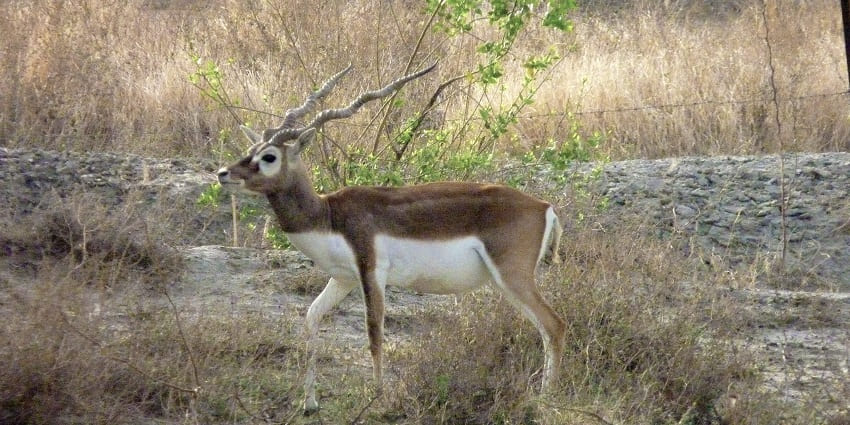
Photo: Archit Ratan / Wikimedia Commons
Tal Chapar Wildlife Sanctuary is located in the Churu district of Rajasthan, India. The sanctuary is situated in the Shekhawati region, known for its arid landscape and unique wildlife. The sanctuary’s grasslands and sparse vegetation provide a distinct setting, making it an ideal destination for wildlife viewing and bird watching.
Suggested Read: Explore The Top Wildlife Sanctuaries In Rajasthan For A Wild Adventure
How To Reach Tal Chhapar Wildlife Sanctuary
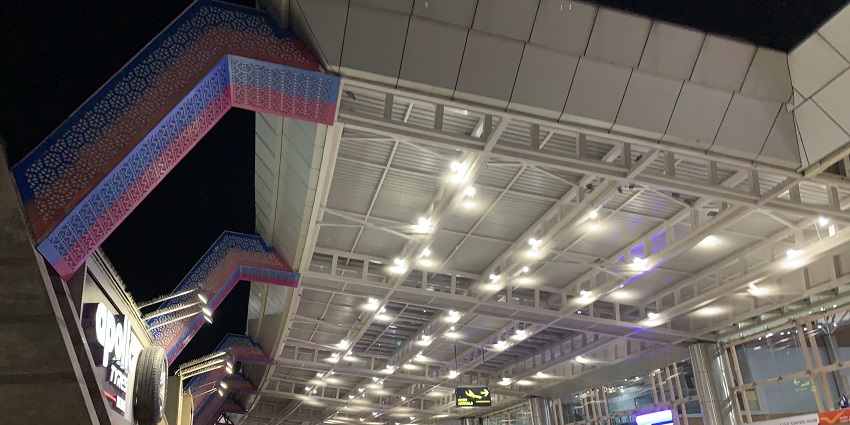
Photo: Chainwit. / Wikimedia Commons
By Air: The nearest airport to Tal Chhapar Wildlife Sanctuary is in Jaipur, approximately 230 kilometres away. From Jaipur, you can hire a taxi or take a bus to Churu and then proceed to the sanctuary.
By Bus: Churu is well-connected by road with regular bus services from major cities in Rajasthan, including Jaipur and Delhi. Once in Churu, you can hire a taxi or use local transport to reach the sanctuary.
By Rail: Churu Railway Station is the closest railhead, located about 40 kilometres from the sanctuary. The station is well-connected with major cities like Jaipur and Delhi. From the railway station, you can hire a cab or take a local bus to reach the sanctuary.
Places To Visit In And Around Tal Chhapar Wildlife Sanctuary
Discover the top attractions in and around Tal Chhapar Wildlife Sanctuary, from its grasslands teeming with wildlife to nearby historical and cultural landmarks.
1. Salasar Balaji Temple
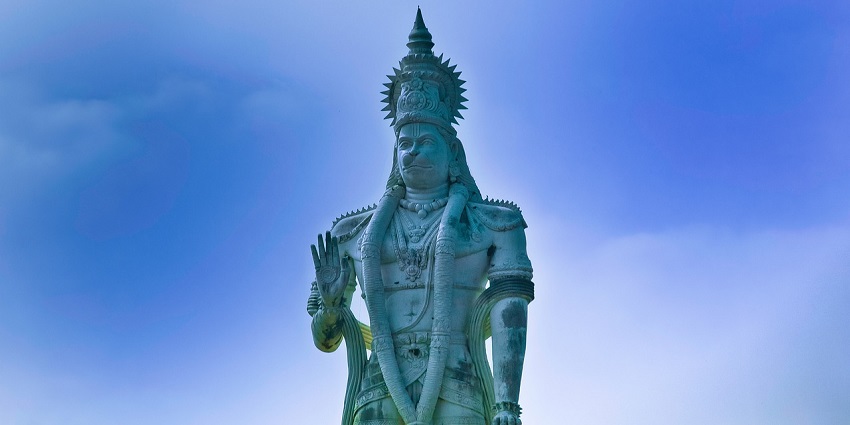
Photo: MOHANN / Pixabay / Image For Representation Only
Located approximately 25 kilometres from Tal Chhapar Wildlife Sanctuary, Salasar Balaji Temple is a revered pilgrimage site dedicated to Lord Hanuman. Known for its sacred atmosphere and architectural beauty, the temple draws thousands of devotees each year. The temple’s vibrant festivals, especially during the Hindu months of Chaitra and Ashwin, make it a popular destination for spiritual seekers. Visitors can experience the deep-rooted devotion and traditions of Rajasthan while enjoying the peaceful surroundings of this significant religious landmark near the sanctuary.
Timings: Open daily from 4 AM – 10 PM
Entry Fee: Free
Suggested Read: Places To Visit Near Salasar Balaji
2. Fatehpur Shekhawati
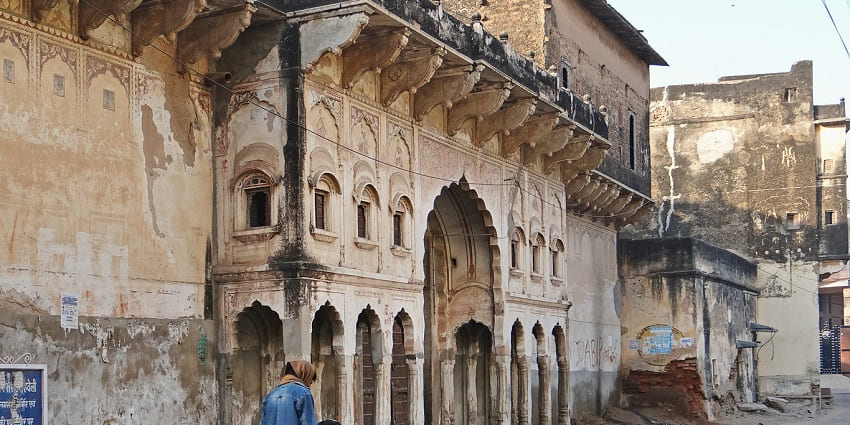
Photo: dalbera / Wikimedia Commons
Fatehpur Shekhawati, located around 80 kilometres from Tal Chhapar Wildlife Sanctuary, is a historical town known for its grand havelis and elaborate frescoes. These magnificent buildings showcase the rich artistic and architectural heritage of the Shekhawati region. The town is often referred to as an open-air art gallery due to the vibrant murals that adorn its structures, offering visitors a unique glimpse into Rajasthan’s royal past. A visit to Fatehpur is a step back in time, perfect for those who appreciate history, art, and culture.
Timings: Generally open from 9 AM – 6 PM (specific havelis may vary)
Entry Fee: Varies depending on the haveli (some charge a nominal fee)
3. Sethani Ka Johara
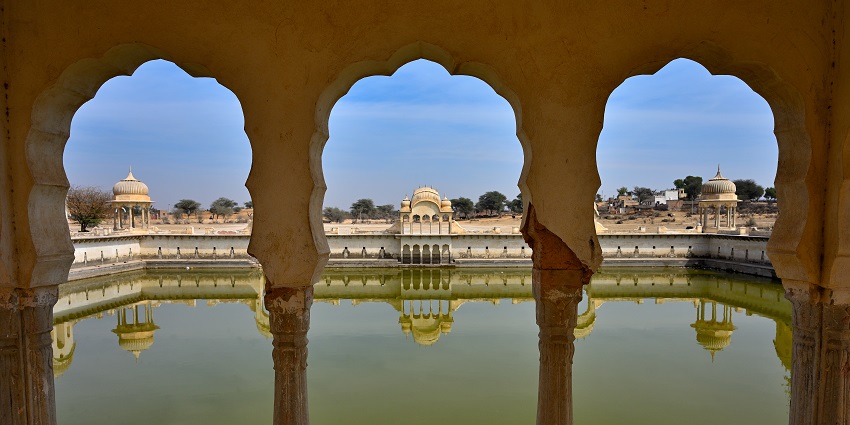
Photo: Sharvarism / Wikimedia Commons
Sethani Ka Johara, situated around 40 kilometres from Tal Chhapar Wildlife Sanctuary, is an impressive historic reservoir near Churu. Built in the 19th century by a wealthy merchant’s widow, it showcases Rajasthan’s traditional water conservation techniques. The johara provides a peaceful spot for visitors to relax and observe the variety of birds that frequent the area. The tranquil environment and architectural beauty of this water reservoir make it an interesting and educational stop for those exploring the region’s historical and environmental heritage.
Timings: Open at all times for visitors
Entry Fee: Free
Suggested Read: Wildlife Sanctuaries In Jaipur
4. Ratangarh Fort
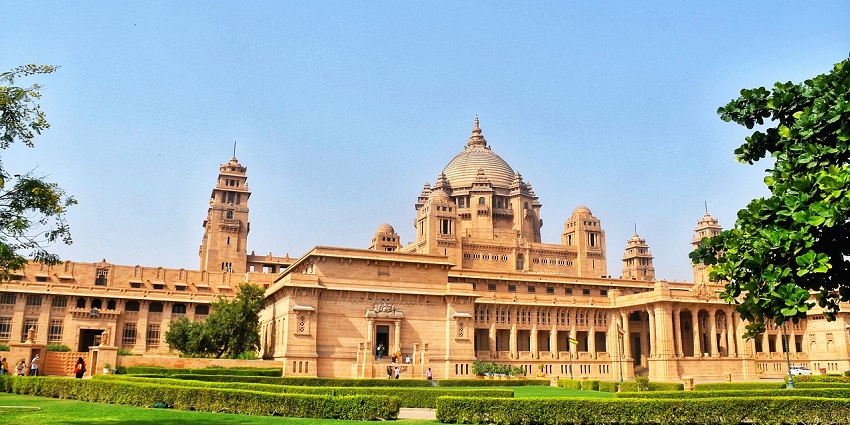
Photo: PINKI_ISHAN / Pixabay / Image For Representation Only
Ratangarh Fort, located about 65 kilometres from Tal Chhapar Wildlife Sanctuary, is a grand structure built in the 18th century by Maharaja Ratan Singh. This fort offers an intriguing insight into the region’s rich history and showcases beautiful Rajput architecture. Its impressive ramparts and scenic views of the surrounding landscape make it a great destination for history enthusiasts. Visitors can explore its courtyards, temples, and artefacts while enjoying panoramic vistas of the area, offering a perfect combination of historical exploration and natural beauty.
Timings: Open daily from 9 AM – 5 PM
Entry Fee: Free
5. Laxmangarh Fort
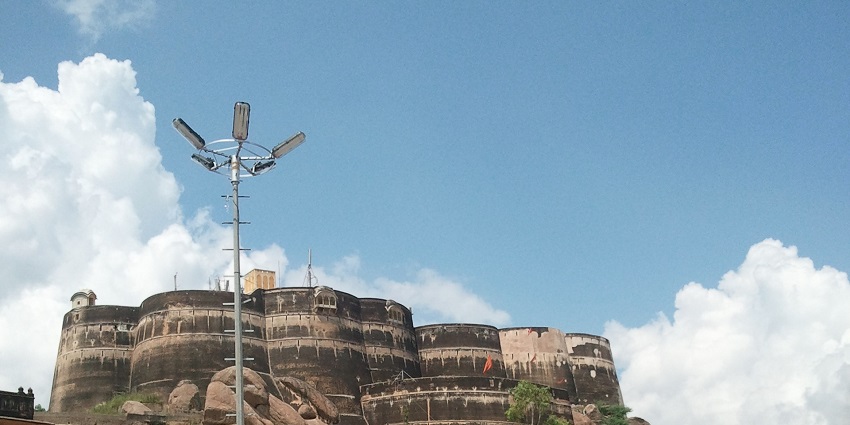
Photo: Khusboo / Wikimedia Commons
Situated around 90 kilometres from Tal Chhapar Wildlife Sanctuary, Laxmangarh Fort is a striking hilltop structure built in the early 19th century. The fort is known for its unique architecture, blending Rajput and Mughal styles, and offers a panoramic view of the surrounding town. Its historical significance and well-preserved condition make it a must-visit for those interested in Rajasthan’s architectural and cultural heritage. Visitors to Laxmangarh Fort can explore its intricate design, enjoy the scenic vistas, and immerse themselves in the rich history of the region.
Timings: Open daily from 9 AM – 6 PM
Entry Fee: Free
Suggested Read: A Journey Through Rajasthan Forts
Where To Stay
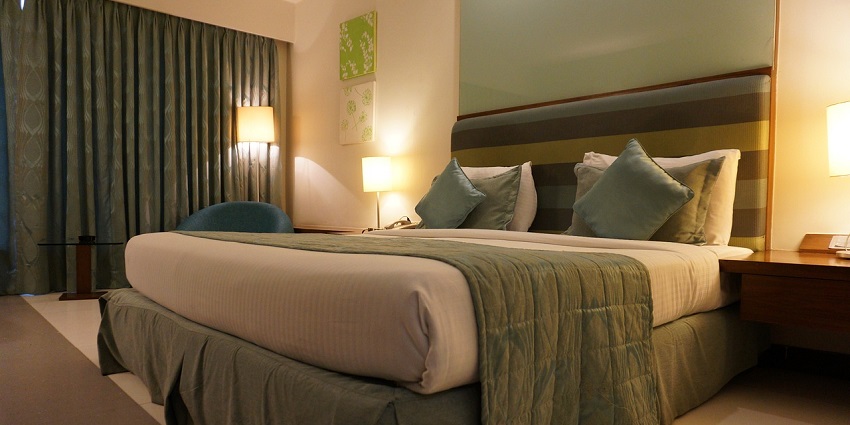
Photo: bottlein / Pixabay / Image For Representation Only
Accommodation options near Tal Chhapar Wildlife Sanctuary range from budget hotels to mid-range guesthouses. In Churu, you can find several hotels offering basic amenities and comfortable stays. Popular options include Hotel Sita Niwas and Hotel Suryagarh, which provide a range of services and are conveniently located for visiting the sanctuary. For a more immersive experience, consider staying in a heritage property or a rural retreat that offers a glimpse into traditional Rajasthani hospitality.
Where To Eat
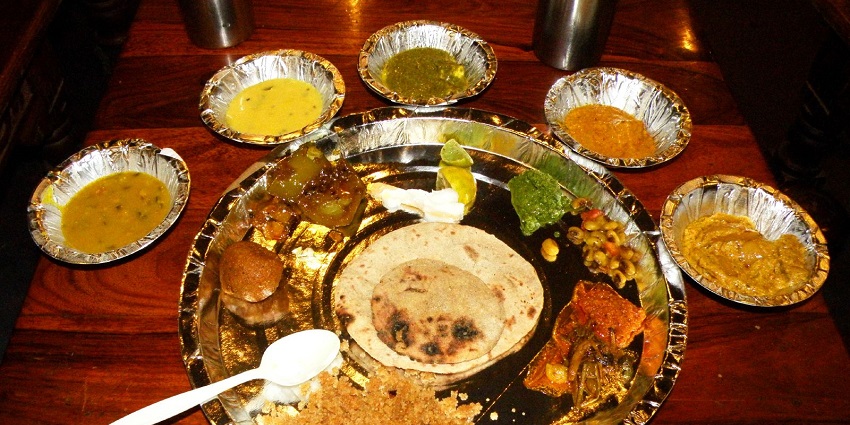
Photo: Raveesh / Wikimedia Commons / Image For Representation Only
Dining options near Tal Chhapar Wildlife Sanctuary include local eateries and restaurants in Churu. You can enjoy traditional Rajasthani dishes such as dal-baati-churma, gatte ki sabzi, and ker-sangri at local restaurants. Popular places to eat include Padmini Restaurant and Churu Restaurant, which offer a variety of local and regional cuisines.
Suggested Read: The Best Foods In Rajasthan
Best Time To Visit Tal Chhapar Wildlife Sanctuary
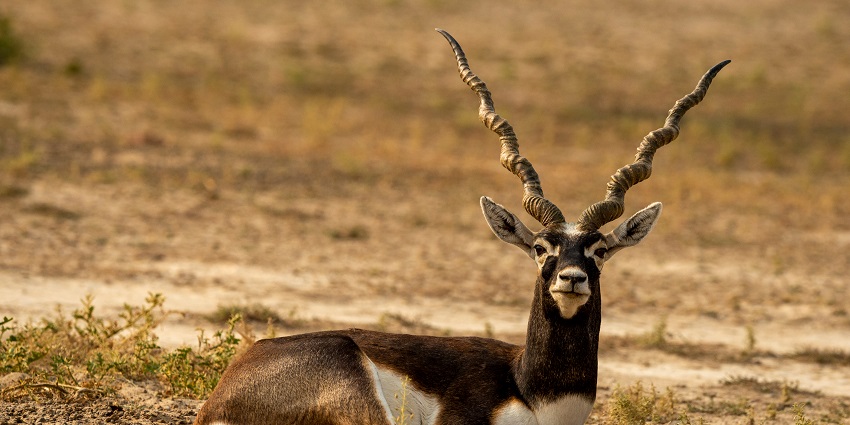
Photo: Sourabh Bharti / Shutterstock
The best time to visit Tal Chhapar Wildlife Sanctuary is from October to March. During these months, the weather is cooler and more comfortable, making it ideal for wildlife viewing and outdoor activities. The winter season also attracts migratory birds, enhancing the bird-watching experience. The summer months, from April to June, can be extremely hot, and the monsoon season, from July to September, brings heavy rains.
Other Factors To Consider

Photo: Puneetcps / Wikimedia Commons
Average Cost Of The Trip
The average trip cost to Chhapar Wildlife Sanctuary can cost between ₹8,000 to ₹15,000 per person, depending on your choice of accommodation, dining, and activities. Budget options and local transport can help manage costs, while luxury stays and guided tours will increase the overall expenditure. Be sure to include costs for travel, the Tal Chhapar Wildlife Sanctuary entry fee, and any additional activities you plan to undertake.
Tips For Travellers
- Book your accommodation and safari slots in advance, especially during peak seasons, to secure the best options and rates.
- Wear comfortable, lightweight clothing and sturdy footwear. Neutral colours are recommended to blend in with the surroundings and avoid disturbing the wildlife.
- Bring binoculars for wildlife and bird watching, a camera for capturing moments, and sufficient water to stay hydrated during your visit.
- Follow all guidelines and regulations to ensure a safe and respectful experience for both you and the wildlife.
Suggested Read: National Parks In Rajasthan
Tal Chhapar Wildlife Sanctuary is a serene haven for nature enthusiasts, offering a unique experience to witness the majestic blackbuck and a variety of bird species in their natural habitat. Its open grasslands and peaceful environment make it a perfect destination for wildlife lovers. Plan your visit today with TripXL for hassle-free bookings and an unforgettable journey into Rajasthan’s wildlife treasures.
Cover Photo: edmondlafoto / Pixabay / Image For Representation Only


 WhatsApp
WhatsApp
 Twitter
Twitter









